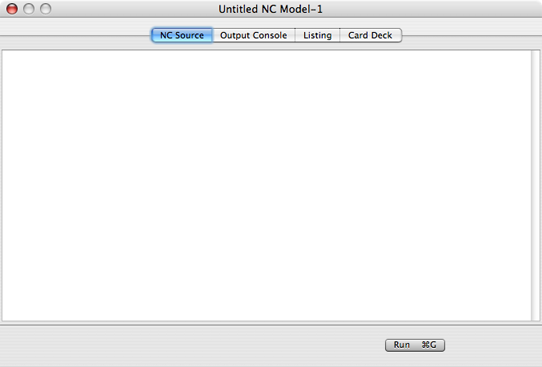
cocoaNEC 2.0 Reference Manual (Section 2)
NC Interpretive Language Interface
Kok Chen, W7AY
[w7ay (at) arrl (dot) net]
Last updated: January 10, 2011
The NC Interface
NC is a programming language
which you can use in cocoaNEC to describe antenna
geometries, set physical parameters, request different
output options and run optimization loops. The NC language
is patterned after the C Programming Language, thus the name
(NC stands for "NEC C").
To create a new NC model of an antenna, select New NC
Model in the File Menu, cocoaNEC will open a new
window for the model, with the title Untitled NC Model-N,
where N starts with 1 for the first window that you open in
cocoaNEC.

If you select Save in the File Menu while an NC
window is still untitled, cocoaNEC will use the same
mechanism as a Save As... .
Save As... presents you with a Save File dialog
for you to select the folder and file name to save the
model to. The model is saved as a plain text file. The
default extension for a NC file file is '.nc'.
If the NC window has previously been saved, or you have
opened the window from an existing .nc file by using the
Open NC Model item in the File Menu, Save
will update the NC file without prompting with a dialog.
Your program is entered as text into the NC Source
panel of the window.
The Output Console panel is where all
printf statements from your NC program send their
output to.
The Listing panel is where all syntax errors of
your programs are logged to. If NC finds a syntax error
when you press the Run button (Command G), it will
automatically switch the window to the Listing view.
If your NC programs runs successfully, the NEC-2 card dec
will be sent to the NEC-2 engine. If NEC-2 finds an error
(for example wires that are too close to ground), it may
not succeed in creating an output and nothing (including
the Card Deck) will show up in the Output window. However,
the deck that is generated will appear in the Card Deck
panel of the NC window and you might be able to discover
the cause of the problem.
There is a normally hidden Stop button next to the
Run button in the NC window.

This button appears while the NC program is running and is
hidden again when the NC program has finished executing.
The Stop button allows you to quit from a repeat
or while loop.